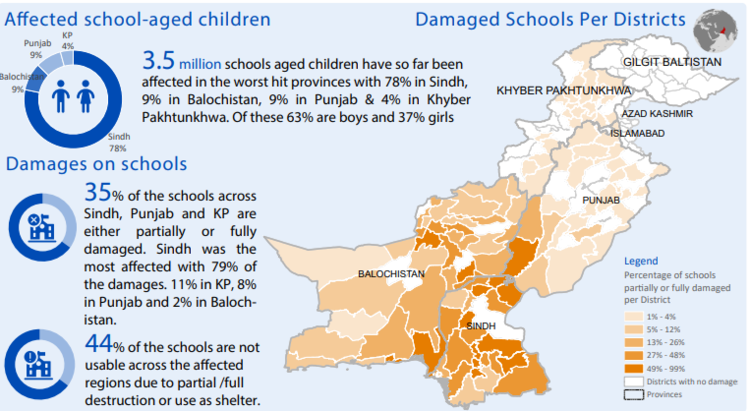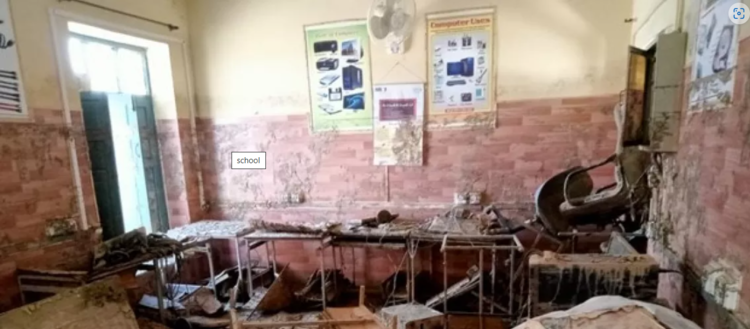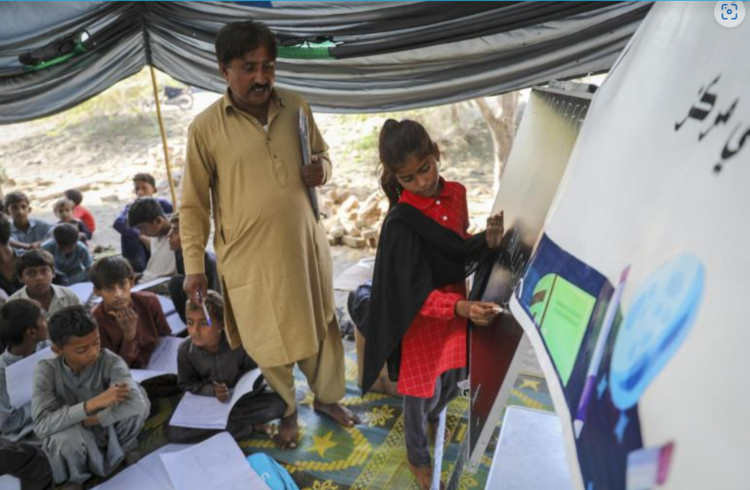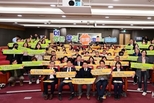Newsnomics AJAY ANGELINA reporter/ The education of 3.5 million children in Pakistan has disrupted by devastating floods this summer left
long lasting impact on the future of Pakistan. The children remain unapproachable to their schools being affected in the worst hit provinces with 78% in Sindh, 9% in Baluchistan, 9% in Punjab & 4% in Khyber Pakhtunkhwa (KPK). Out of these 63% are boys and 37% are girls.

Reported by Pakistan Education Sector Working Group- EiE on 30 September 2022
At least 25,993 schools have been destroyed, more than 7,062 schools turned into relief camps to provide shelter for the flood effected
population in the regions of Sindh, Baluchistan, Punjab, Khyber Pakhtunkhwa (KPK). Gohar Abbas, an education activist, says that “many schools have been transferred to emergency shelters where families have temporary accommodation.” Sindh Province was the most affected with 79% of the damages,11% in KP, 8% in Punjab and 2% in Baluchistan. Most of the schools are underwater or severely damaged and unsafe, needs time and millions of worth to renovate the Education sectors.

Government High School Ahmadani, in Pakistan’s DG Khan district has been badly damaged by the floods. Photo credit: Sashim Khan
In addition, teaching and learning materials including books, copies, blackboards, tables, and other education furniture worth millions of
rupees have been completely destroyed as well interrupting school systems and the ongoing academic year. "Everything has gone away, we lost our studies," said 10-year-old Kamran Babar, who lives in a nearby tent city since his home and school were submerged reported by RFI.
Not only that Children are facing the problem of Learning deprivation, security threat, diseases, hunger, nutrition, poor health, hygiene, no
electricity and clean drinking water, but more severe is Traumatic impact.
The government of Pakistan, UNICEF, Education sector and other agencies have set up multiple emergency learning camps near the flood effected areas to provide children with continuity of learning, safety, and a sense of normalcy, and to prevent children, especially girls, from dropping
out of school. But it also affects them as they sit on floors lined with plastic sheeting, answering teachers' questions in chorus. As midday
approaches the tents are baked by the sun, and students fan themselves with notebooks -- quenching their thirst with mouthfuls of cloudy,
polluted floodwater. When they fall sick, and the majority of them do, it drastically affects their attendance. More to think is that winter is on the door that can also cause complexity.


UNICEF-supported Temporary Learning Centre (TLC) Kama Gul village, Dadu. Access to education even harder. Photo Credit Asif Hassan.AFP
The Government of Pakistan and the World Bank are freeing up existing and new funding to build back this Education infrastructure with
better climate resilience. Rebuilding Pakistan’s education system will require coordinated effort, resources and the smart sequencing of
interventions as the future of millions of children depends on it.
영상 출처=Global Education Cluster










